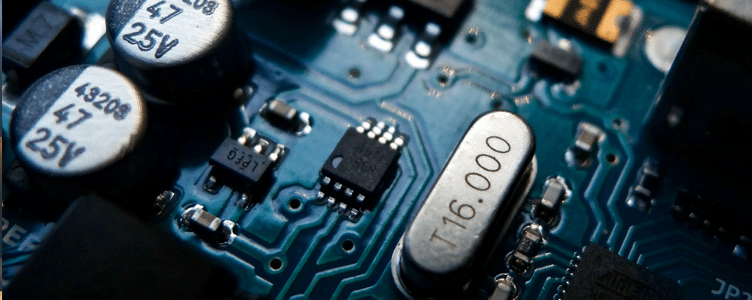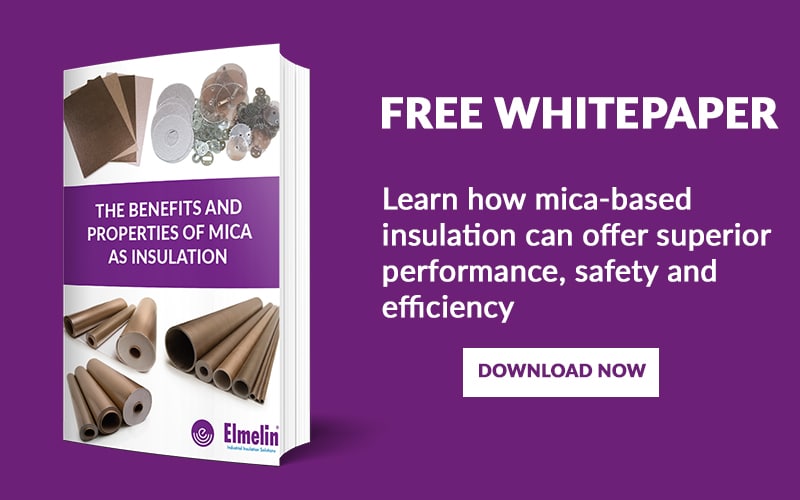
Capacitors have an important role and function in a wide variety of applications. They are devices for storing electrical energy – preventing damage, information loss and filtering out unwanted frequencies. They are used in everything from microelectronic circuits to massive power systems. An important feature of most capacitors is their dielectric component. Most capacitors have a dielectric spacer – a sheet of dielectric material between the two conducting plates, increasing its capacitance and improving the stability of the system. Here we explore the essential properties and interactions between dielectrics and capacitors.
A range of solid dielectric materials are used in capacitors to varying degrees of effectiveness. Paper was used in older capacitors but has largely been replaced by plastic film, due to the fact that it absorbs moisture. Other common materials include glass, ceramic and mica.
Let’s take a closer look at the use of dielectrics in capacitors, and what you need to know about their properties.
Important properties of dielectrics in capacitors
As covered in a previous post, a range of materials with varying dielectric properties are commonly used, and their individual properties make them suitable for different applications.
Generally, in the context of a capacitor, the most important electrical properties to be considered when it comes to the material used are its capacitance and its tolerance.
Capacitance is the ability of a system or material to store electrical charge. More specifically, it refers to the ratio of the change in electrical charge to the corresponding change in electrical potential. Materials with a low capacitance store little to no electrical charge – those with a high capacitance store high levels of charge. Capacitance is measured in farads. Millifarads (one thousandth of a farad) are denoted as μF.
Tolerance is the extent to which the actual capacitance of the material is allowed to vary from its nominal value, or to put it more simply, the percentage or margin for error in the capacitance of a system or material. They are measured as +/- % values. For example, if a material has a nominal capacitance of 100μF and a tolerance of +/-10%, it could vary from 90 to 110μF while retaining its tolerance. Lower tolerances are usually desirable in most applications to provide stability.
Other important properties to consider include the material’s dielectric strength and permittivity. Dielectric strength is the ability of a material to withstand electrical stresses without breaking down – expressed as volts per millimetre. Permittivity, or dielectric constant, measures the polarizability of a material.
Mica as a dielectric in capacitors
Mica is ideal for use as a dielectric material in capacitors. It has a dielectric strength of around 2000 volts per millimetre, meaning a millimetre of mica can withstand 2000 volts before breaking down and conducting electricity. For that reason, mica is often used in high voltage applications.
Because of its physical properties, mica forms in incredibly thin sheets and can be easily cut, shaped and stamped into various forms. Mica sheets and tubes are commonly used in capacitors and other high voltage applications. In addition to this, mica is also very effective at extremely high temperatures, is incredibly durable and resistant to the elements.
Mica also has relatively low capacitance but also low tolerance. The tolerance for a mica capacitor can be as low as +/-1%. When compared to something like ceramic which has a tolerance of +/-20%, mica is much more useful in environments where stability is important. It is common in applications where low capacitance but high stability is called for, such as RF transmitters and power circuits. Mica’s capacitance also remains stable over time and across a wide range of temperatures, voltages and frequencies, making it a highly effective dielectric material for use in capacitors.
Elmelin’s mica-based solutions
Elmelin have been using mica in electrical and insulation applications for over 100 years. Our expertise in selecting the right solution for the right application, paired with our CNC milling capabilities mean that we are able to mass-produce mica components to be used in capacitors produced at scale, to highly specific measurements and specifications. We also manufacture mica tubes used to insulate shafts and bars in high voltage capacitors. If you have a requirement for mica-based components in an electrical application and you’d like to speak to one of our experts – get in touch.

